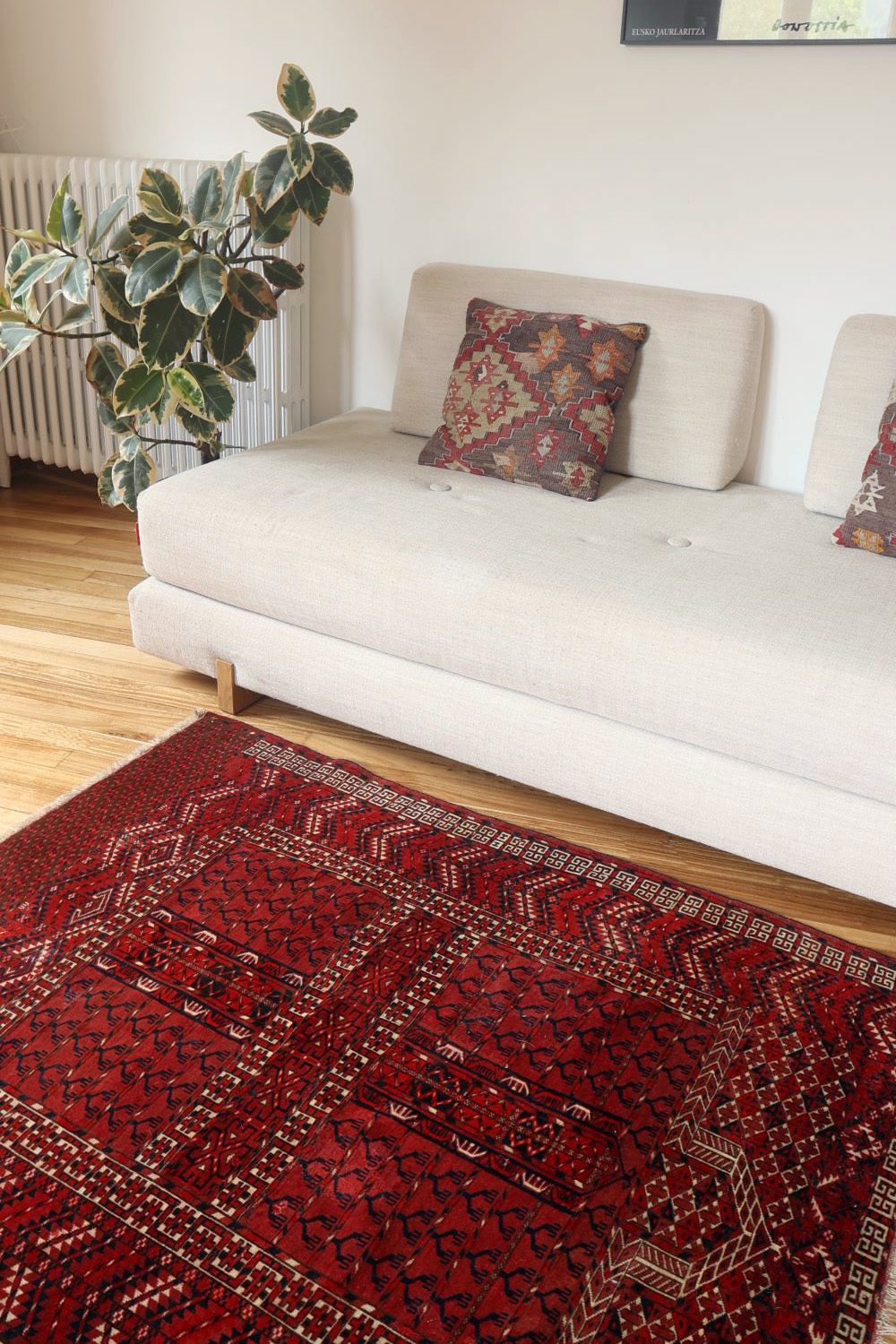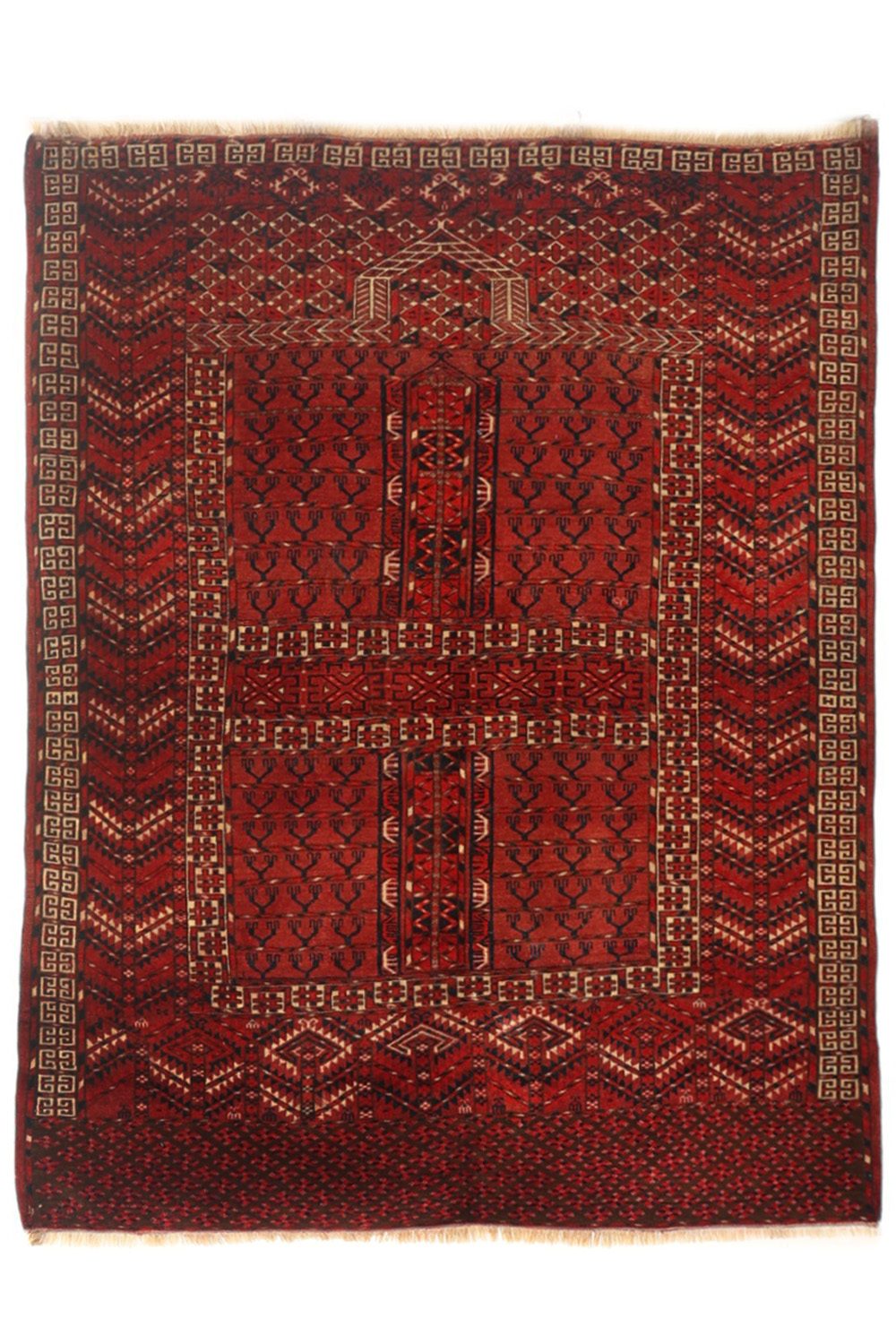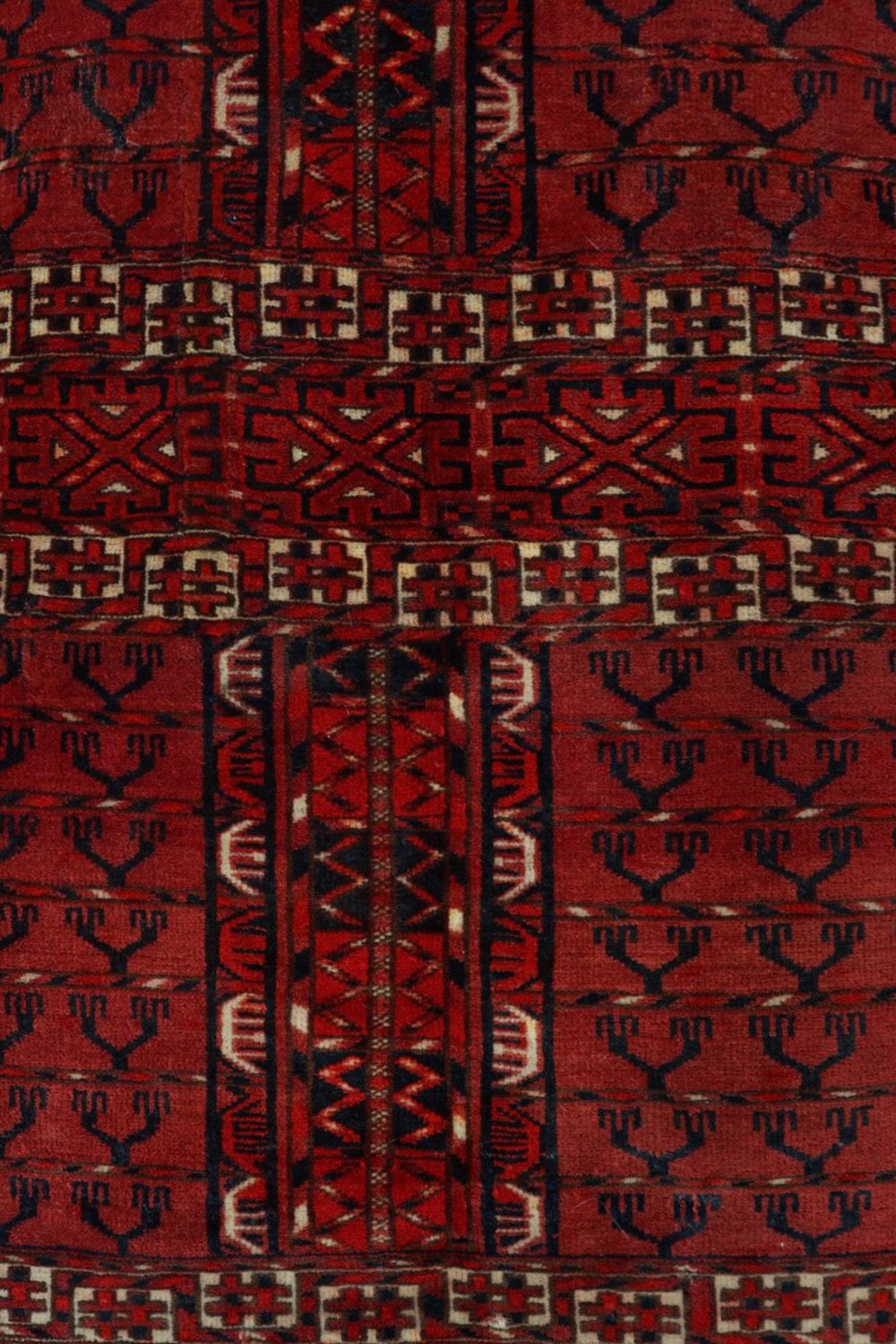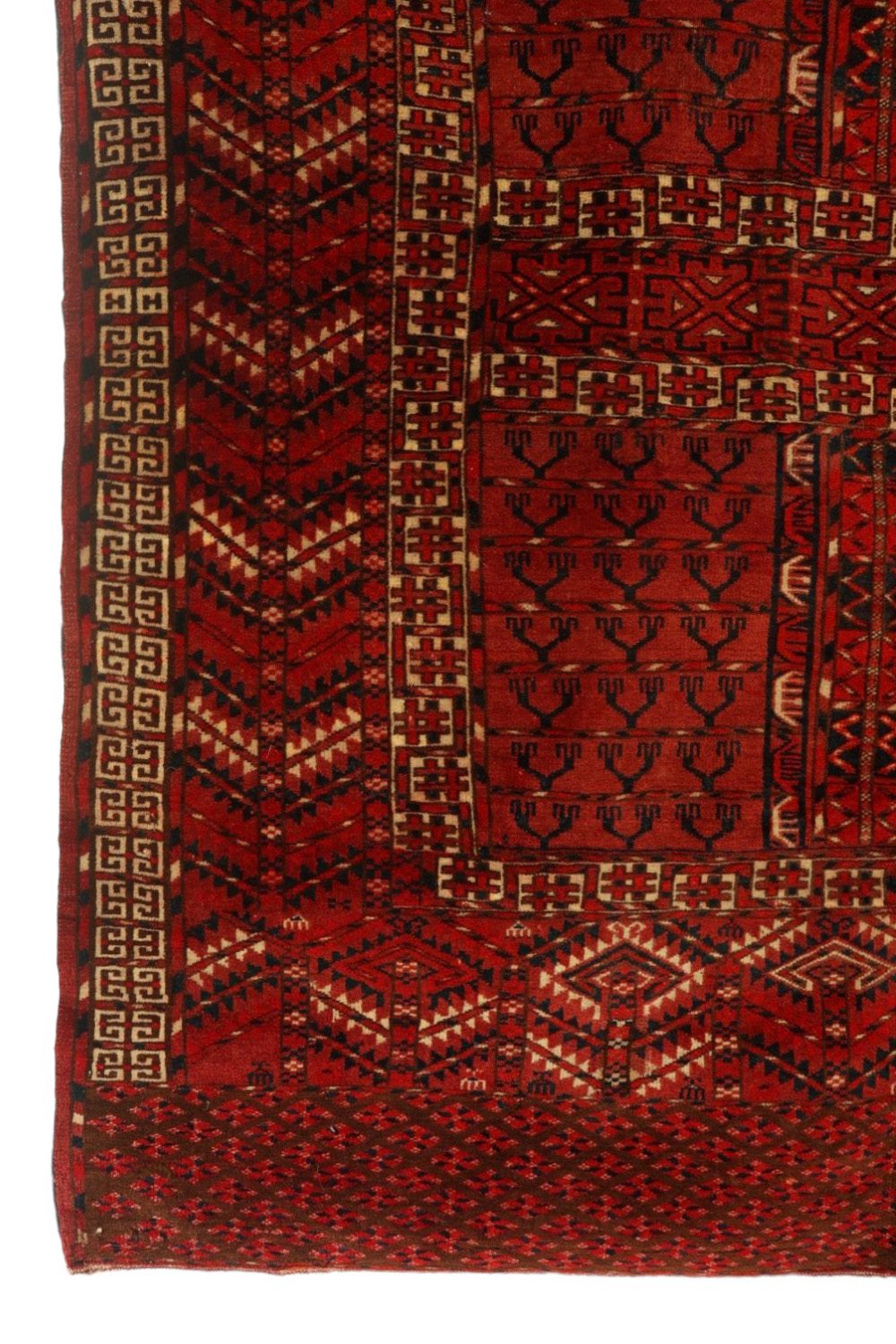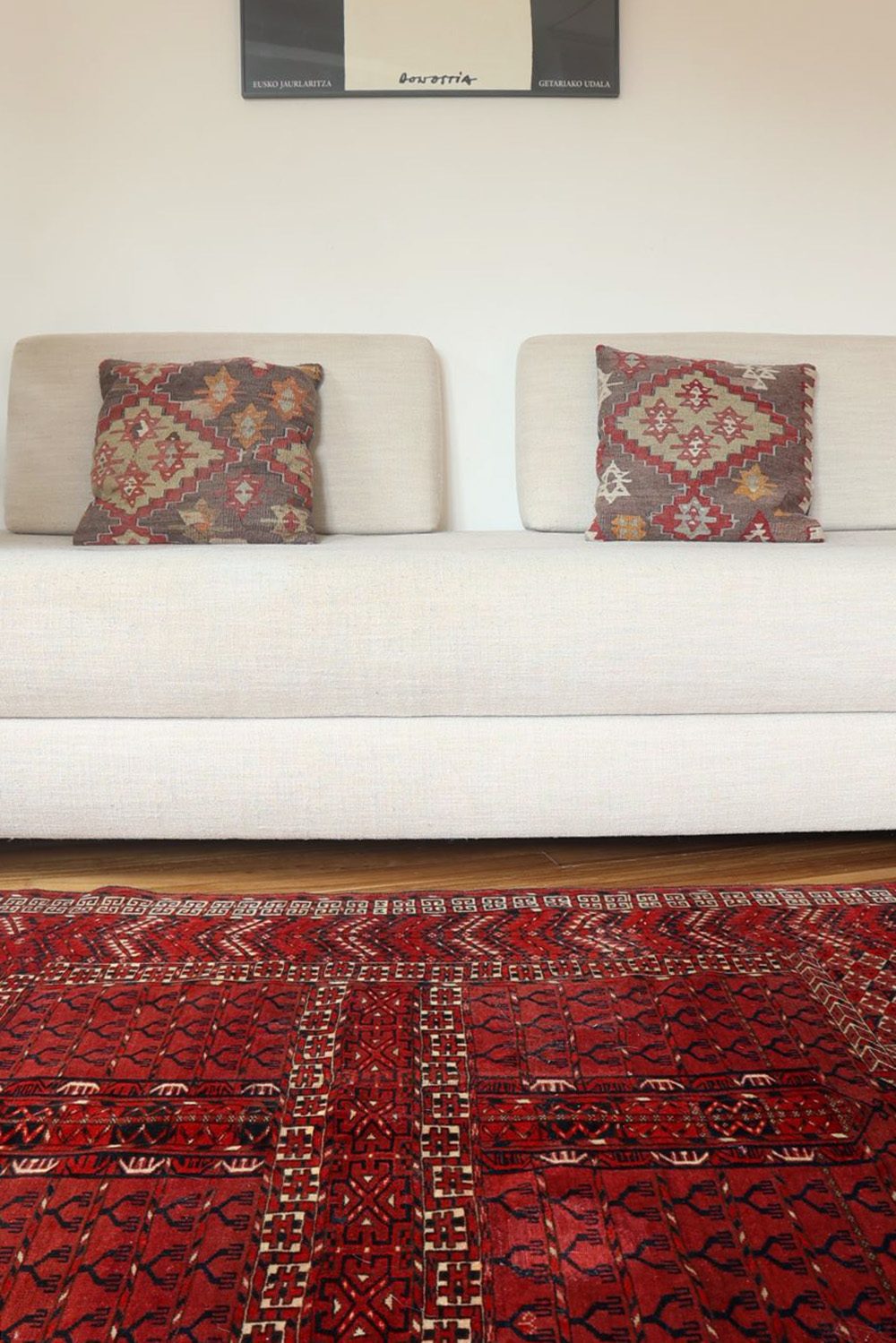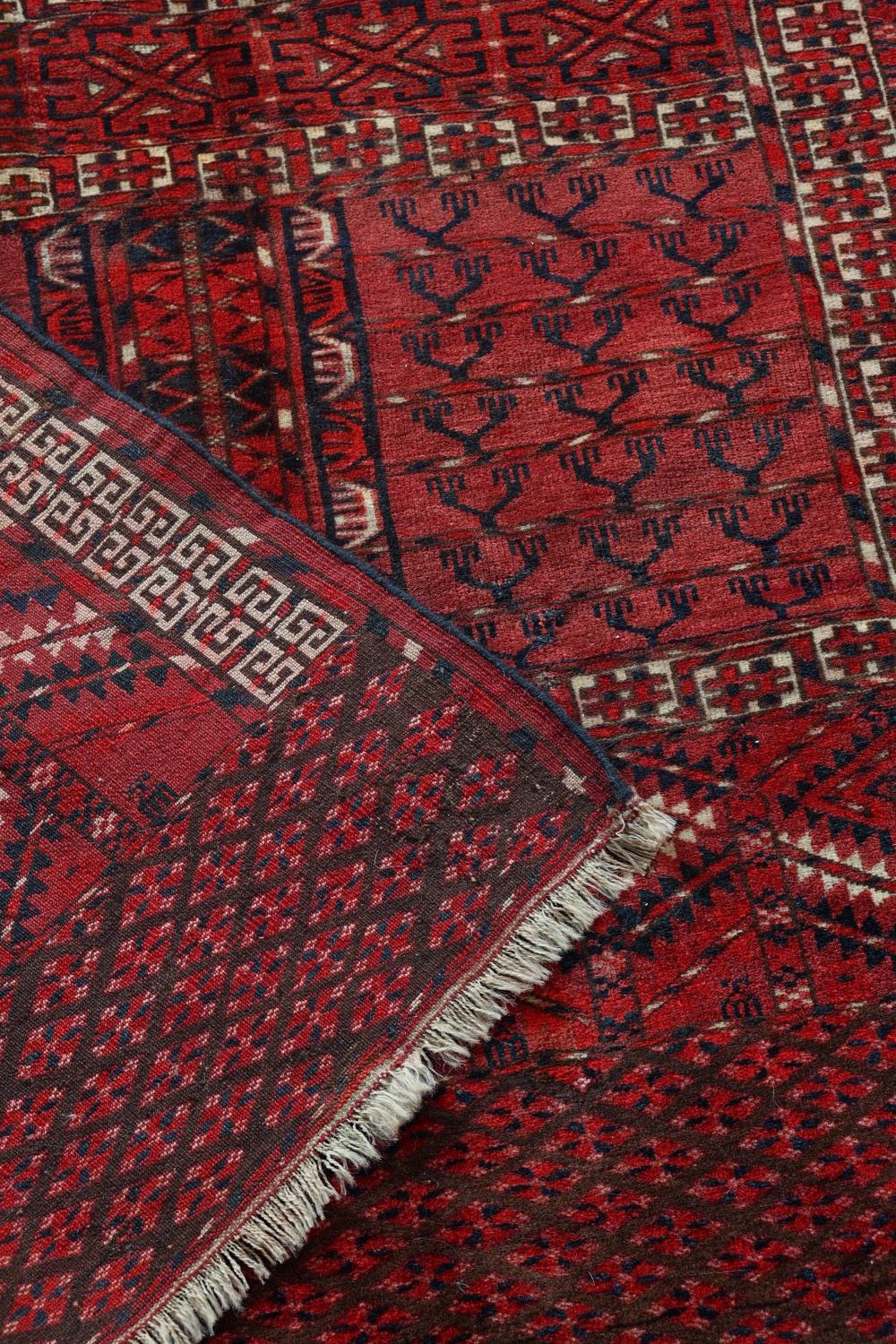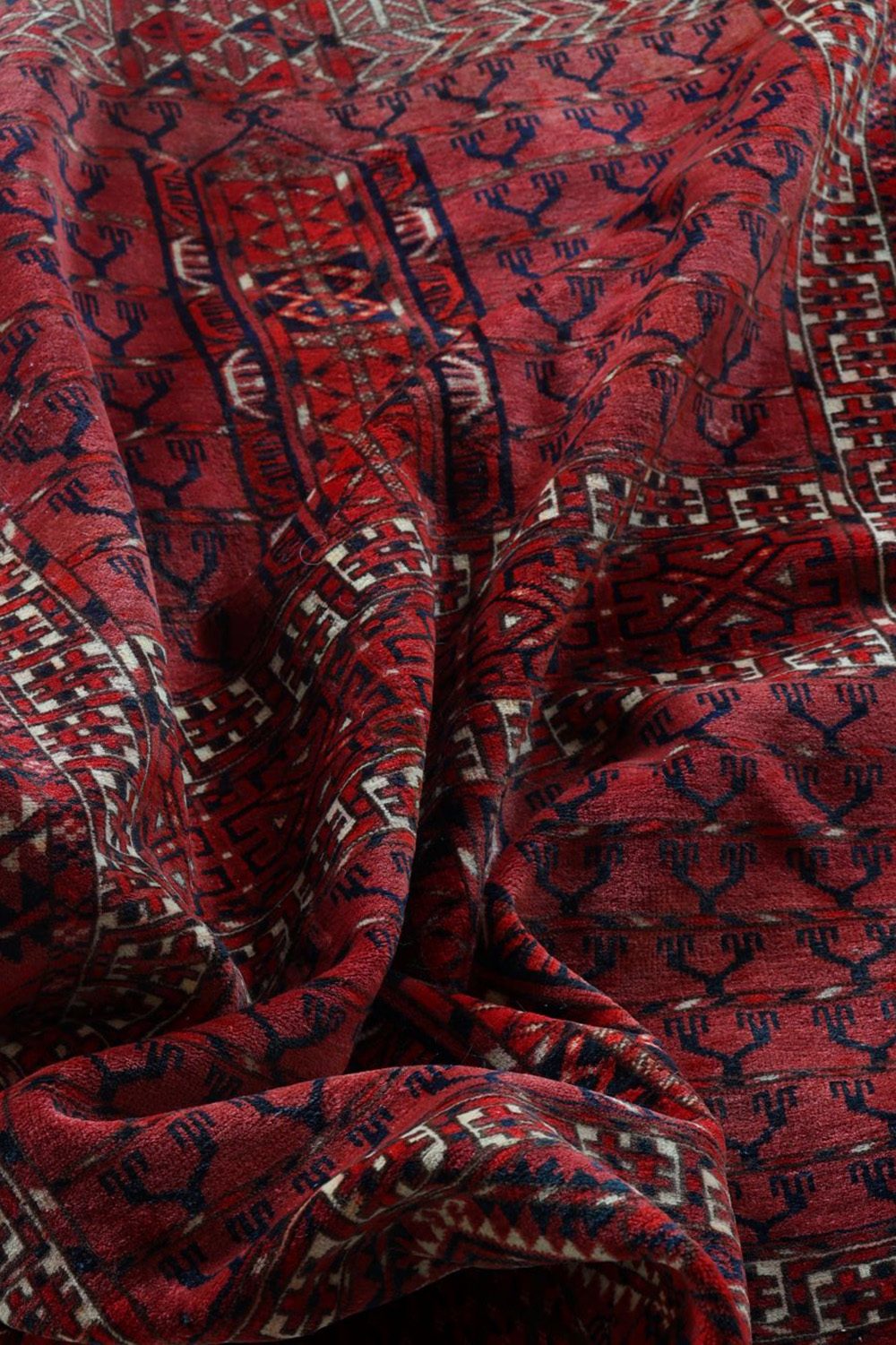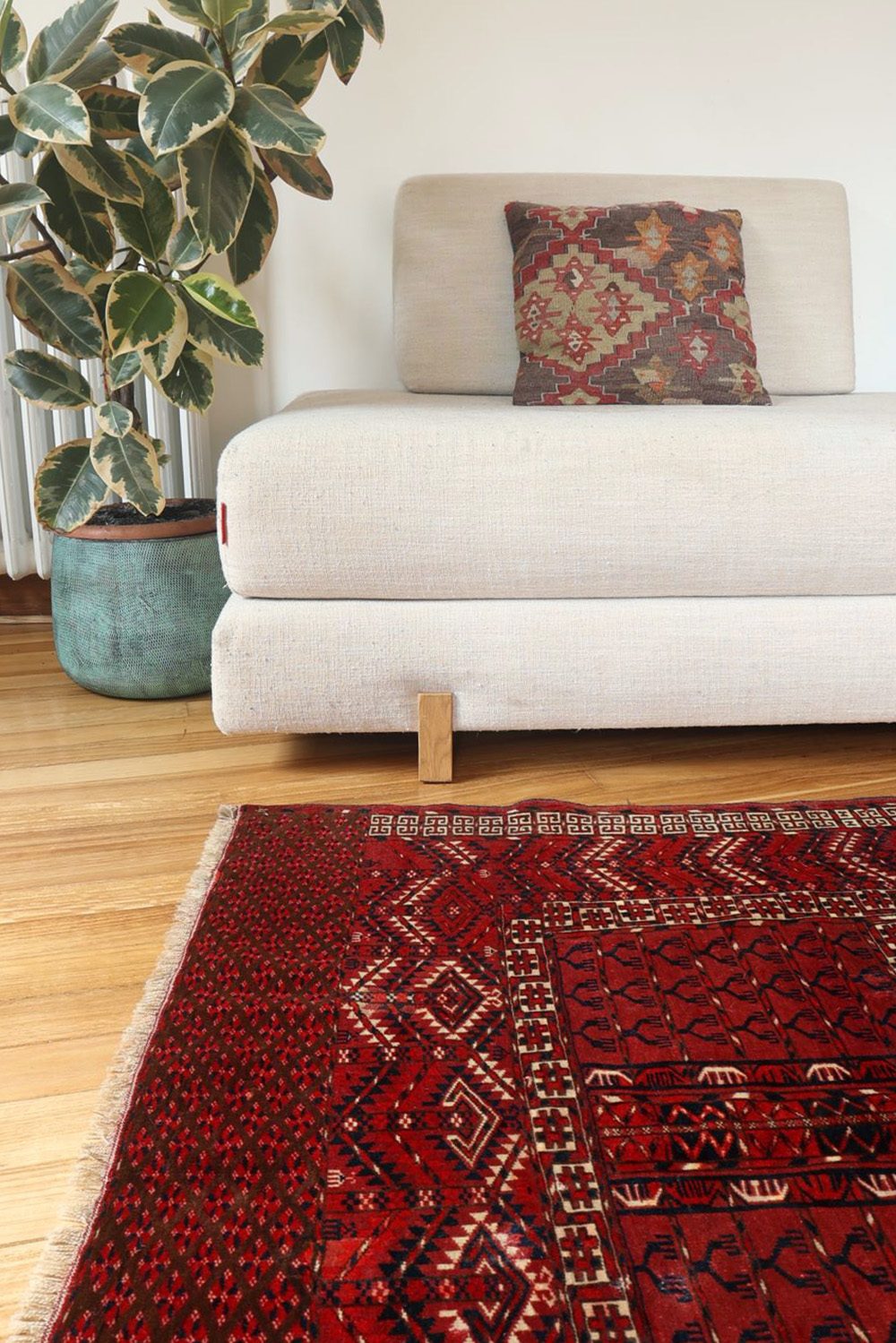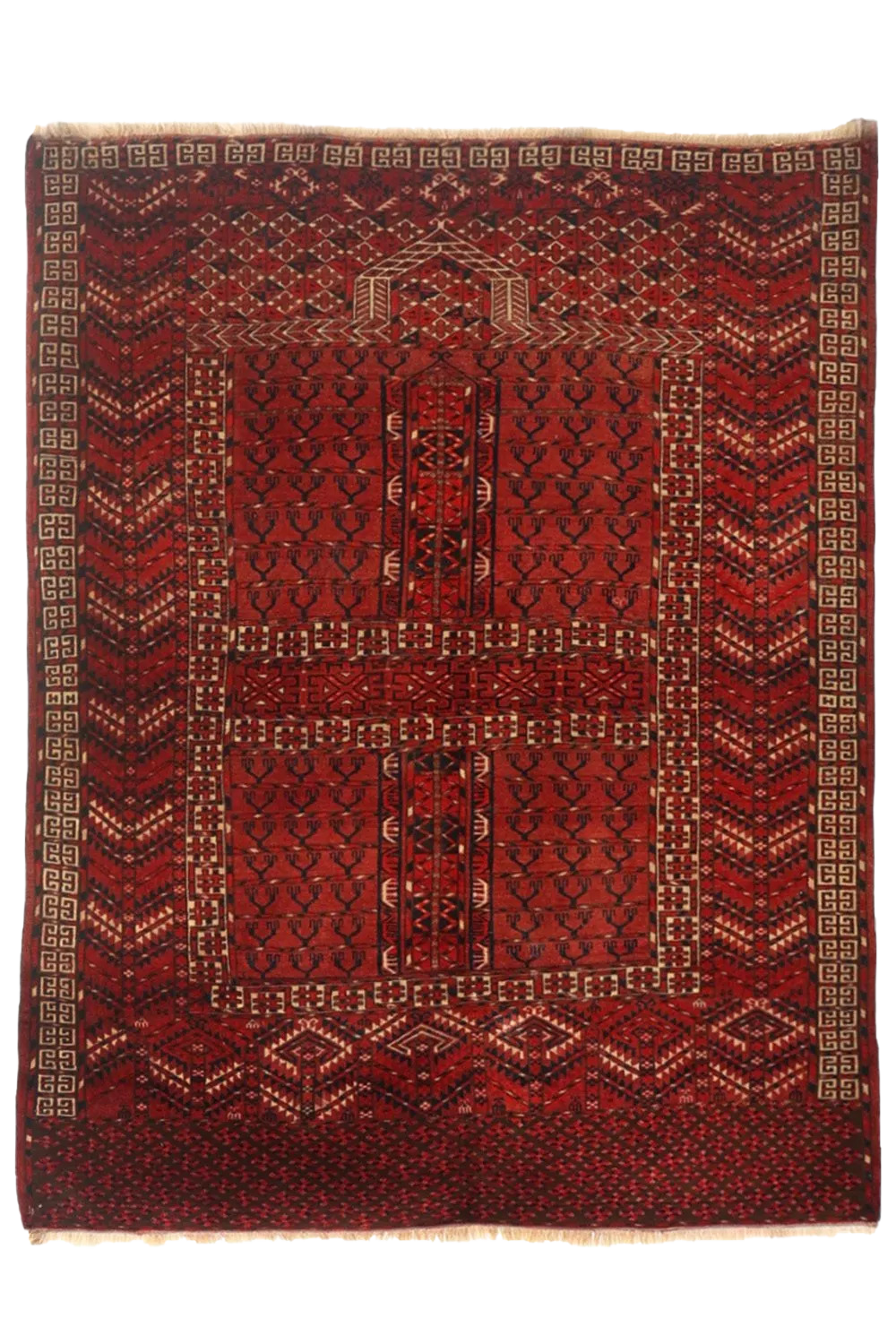This rug is an Ensi, or a rug to cover the tent door. Ensi or engsi rugs are door hangings of a yurt, a traditional Turkmen nomadic tent. Covering the doorway of the tent ensi was supposedly destined to preserve the inside temperature from winter and summer extremes, but also to keep the dust out. There is also a different opinion that suggests treating ensi as a ritual rug used only for special social and cult occasions. Ensi is considered a complex kind of Turkmen rug in the aspects of design and iconography. Here in the middle of the carpet there is a cruciform composition of two broad stripes filled with small geometric elements. Small hooked motifs of various kinds also fill the four rectangular fields formed by the central “cross” and several stripes of border. Above the central field there is a stylized image of the tent or a mihrab. The design of the carpet is known as “hatchli” and is typical for Tekke, one of the major tribes of Turkmen. Ethnographic studies suggest the connection of a central cross-like pattern with the idea of rivers and canals, while a variety of smaller elements – with sheep and cattle, together with water make up the main resources of nomads’ lives. The background of the carpet is dark ruby, other colours of the pattern include lighter shade of red, dark blue, brown and ivory white.
Material: 100% hand-spun sheep wool
Size: 138×118 cms
Origin: Tekke tribe, Turkmenistan
Date of weaving: 1930’s
The turkmen are people who speak a language belonging to the southwestern branch of the Turkic languages. The majority live in Turkmenistan and in neighbouring parts of Central Asia and numbered more than 6 million at the beginning of the 21st century. About one-third of the total population lives in Iran, especially in the north, and another 500,000 live in northeastern and northwestern Afghanistan. These groups are called the Transcaspian Turkmen. Pockets of Turkmen are found in northern Iraq and Syria. Smaller groups live in central Turkey. The territory of the Turkmen is generally arid. They were by tradition a nomadic pastoral people, living in tent villages and raising sheep, goats, horses, camels, asses, and cattle.
1 in stock
| Weight | 6 kg |
|---|
